Narthaki

News

Info

Featured


|   |
 e-mail: leelakaverivenkat@gmail.com Simplicity sans glitz has Meera walking into every heart August 4, 2016 It is precisely because the story of Rajasthani Saint poetess Meera is so close to the heart of most Indians that visualizing any aspect of it through performing art poses more challenges in avoiding a sense of déjà vu and there is always the problem of keeping free from falling into mushy sentimentality or being tempted to veer towards ornate stage décor, which in trying to catch the royal trappings of Meera's aristocratic lineage, could dwarf and lose the saintly side totally. Which is why one applauds the stark simplicity of 'Meera - the soul divine' as conceived and choreographed by Chitra Visweswaran for her students of the repertory of Chidambaram Academy of Performing Arts, as part of the fund raising effort for 'Aim for Seva,' the movement launched in 2000 by late Swami Dayanand Saraswati - thinker, philosopher, teacher and one of the tireless social workers ceaselessly striving to better the lot of India's deprived children. 'Meera - the soul divine' premiered at Chennai's Music Academy auditorium on July 30, 2016, held the packed auditorium spellbound. Doing away with all stage trappings, Chitra Visweswaran opted for starkly bare performance space, wherein an idol of Krishna and a white line drawing of a temple etched on the black back curtain were the only properties, leaving the whole story to be told by the dancers' performances alone. The treatment steered clear of a historical narration, putting the emphasis instead on the spiritual journey of a royal princess of Rajasthan, who defying the time worn conventions of royalty and society dared to follow the call of her heart engaging in a life long search to become one with her desired- Krishna. The success of the effort was due in no small measure to the musical scaffolding scored by Bombay Jayashri Ramnath, who apart from her golden voice has a style anchored on her traditional grooming under her guru Lalgudi Jayaraman, combining with it a penchant for interacting with other musical cultures and exploring new areas. Her familiarity with North Indian languages and Hindustani ragas comes in for special use in this production - which in the textual format is based on compositions from the Hindi belt including Rajasthani poetry of the Saint poetess Meera. Many kavits which are a blend of abstract syllables as well as words (much in the manner of the Kavutvams of the south) were used to good effect and whether this part was contributed by Chitra or the musician was not clear. Both melody in the Hindustani classical mode and diction of the songs had an unalloyed authentic ring in the singing which comprised a slew of voices led by Bombay Jayashri herself along with Chaitra Sairam, Swetha Sriram, Vijayashri Vittal, S. Girijashankar, A. Narayanan, Santosh Subramaniam, Amrit Ramnath, Uma Namboodripad and Ayushman Sairam along with a host of instrumentalists including the dholki. Notwithstanding this large group, a repose and quietude were preserved, and aurally this added to the production values by helping evoke the ambiance for a theme based on the inner human being. Both music and the dance were guided by the same introspective restraint. Slide show Photos: Santosh of Fotozone 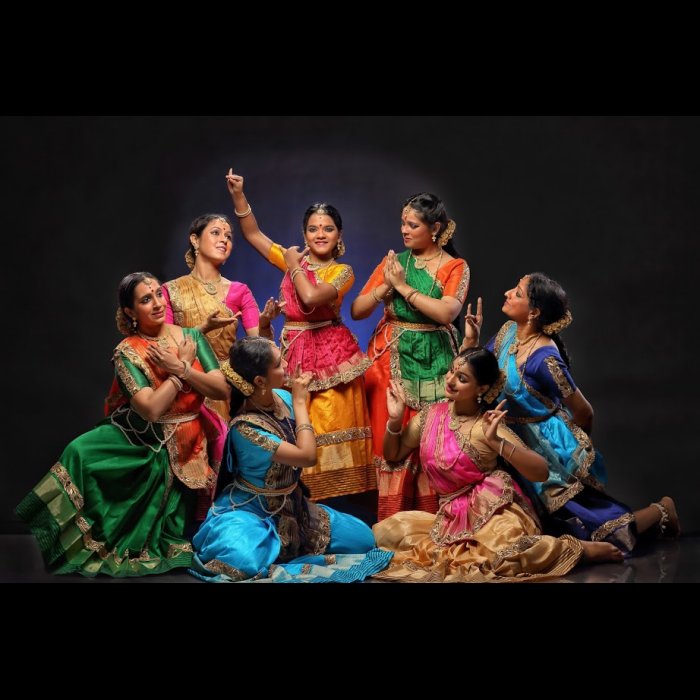

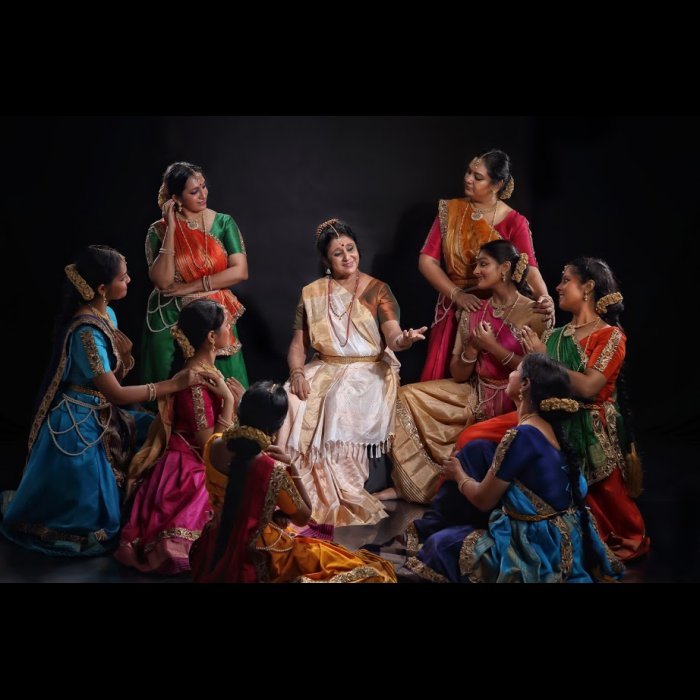
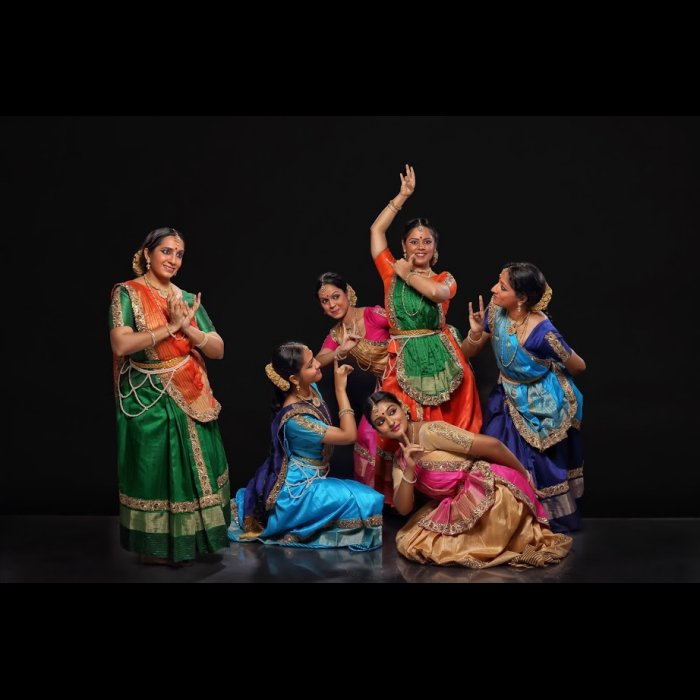
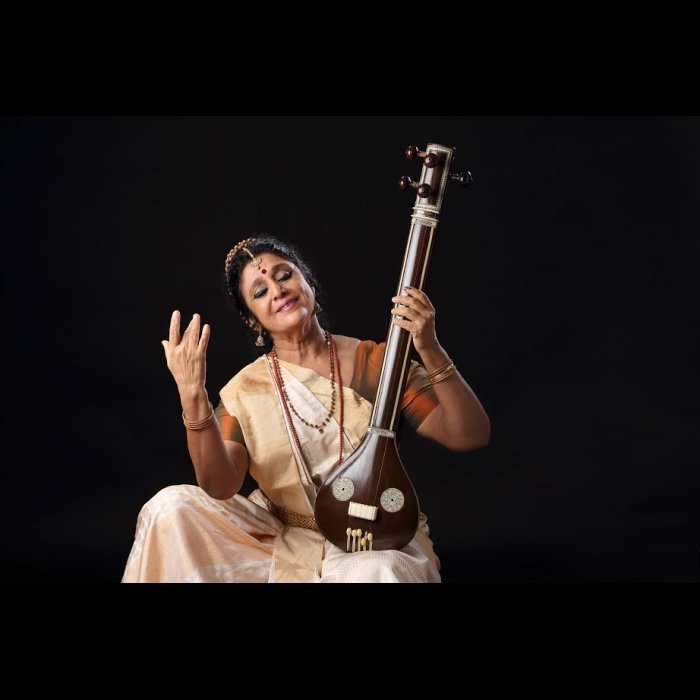

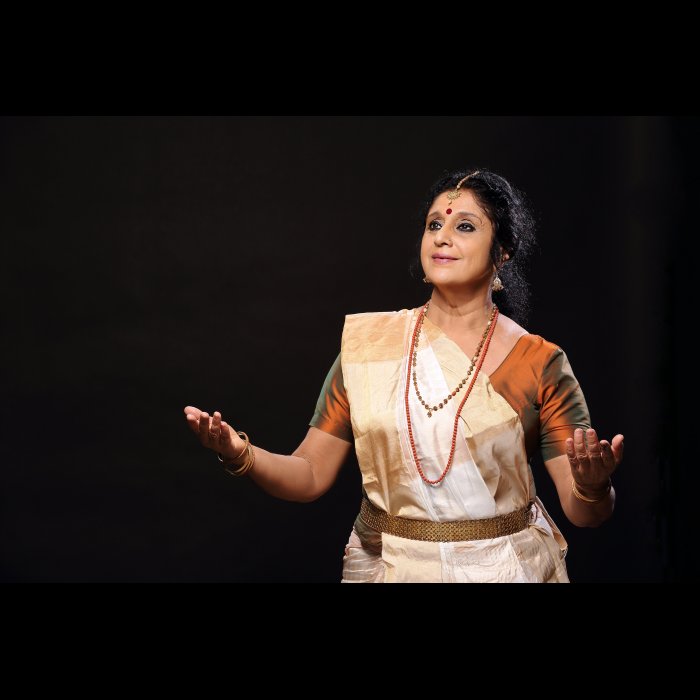
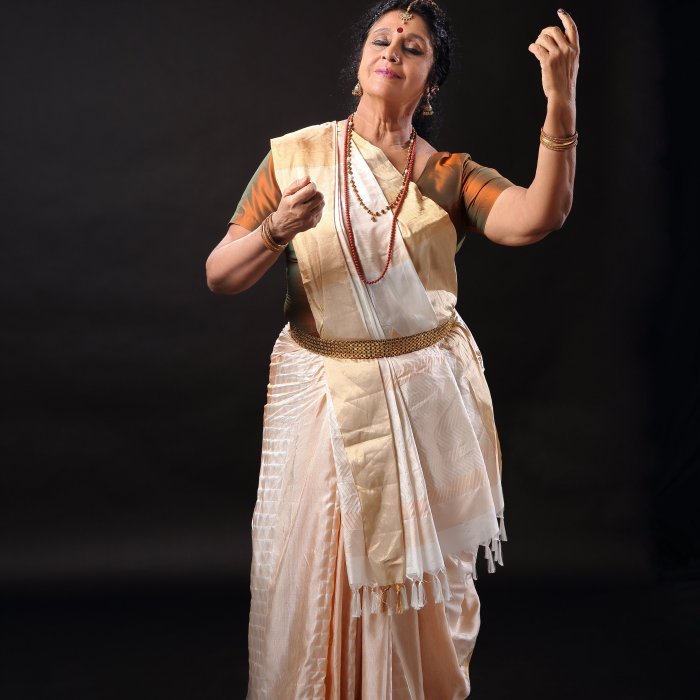 By building the dance treatment round the persona of Meera visualized in four stages of her life, enacted by four dancers, the differences in the tone of the evolving spiritual journey became automatically a part of the production - starting as a child smitten by an unusual curiosity and bonding with 'Giridhari'; as a young girl who carries her passion for Krishna into her marriage to the royal son of the Chithor clan, her obsession making for a tricky relationship with the in-laws; the continuing obsession with her giridhari creating obstacles in the royal household as Meera grows into adulthood displaying no eagerness to concern herself with the conventional duties of wife hood and royalty. Finally appears the Saint poetess engaged only in the fevered search for Krishna whose presence at Dwarka she perceives within herself to become one with him. The movement composition full of light footed grace in the manner of Chitra's style, was often based on a vocabulary of rhythmic syllables sans words. A case in point was the marriage scene starting with the arrival of the horse carriage with the royal bridegroom, concluding with the carriage moving away with the young bride, the action tellingly visualizing her eccentricities in not allowing her face to be modestly covered like every Rajasthani bride, along with her preoccupation with a Krishna idol held close to the chest, causing uneasiness in the anxious relatives with a gradually appearing vexation if not immediate anger in the groom. Similarly certain other points in the life of Meera appearing as throwback incidents (like the poisoning and imprisoning by the in-laws) appeared in quickly moving glimpses, enacted without any wallowing or needless hype, preserving the flow of action as also the tenor of the production, which never lost sight of the inner human being in overblown histrionics. In child Meera enacted by Shruthe Raammohan, the production had a clean winner, this performer, a natural for the stage full of ebullience and a sparkling involvement which get communicated to the audience straight away. In fact, Shruthe set the tone for the rest of the production with the message conveyed in no uncertain manner. Taking the baton from her as the adult Meera was Uma Namboodripad with her grace and interpretative sensitivity. In conclusion, came Chitra herself as the saintly Meera who has broken away from all human bonds and is frantically in search of her Lord in Brindavan, to finally perceive his presence within herself, to become one with him. With Chitra's innate ability for abhinaya, this role is tailor-made for her. Despite all this, one felt that the last part, edited a tad would enhance the impact - removing over statement in both the music and hence, the interpretation too. One very subtle aspect of Chitra's group visualization was in having a carefully planned informality which never had the impression of tailored group formations. Songs showing the merriment surrounding Holi "Abi da gulaal ki dhoom machayi" or Krishna swinging in the "Jhoolata Radha" song were cases in point. Songs very familiar to the Krishna concept like "Baso mere nayananame Nandlal" or "Jal bin kamal chandra bin...." Translating into strong images of Meera's pangs in being separated from her beloved Lord, are full of an erotic undercurrent for the North Indian or the Kathak dancer. But in Bharatanatyam in the south, the srinagar gets subsumed in the 'bhakti', which is more internalized. And in this production too one could see this difference. Meera threshing on land like the fish out of water in fevered intensity of desire is not the way this ardent devotee is usually conceived in the south. Costumes were elegant in simplicity and suffice it to say that ultimately 'Meera - the soul divine' walked quietly into the inner chambers of every viewer's heart.  Writing on the dance scene for the last forty years, Leela Venkataraman's incisive comments on performances of all dance forms, participation in dance discussions both in India and abroad, and as a regular contributor to Hindu Friday Review, journals like Sruti and Nartanam, makes her voice respected for its balanced critiquing. She is the author of several books like Indian Classical dance: Tradition in Transition, Classical Dance in India and Indian Classical dance: The Renaissance and Beyond. Post your comments Please provide your name and email id when you use the Anonymous profile in the blog to post a comment. All appropriate comments posted with name & email id in the blog will also be featured in the site. |